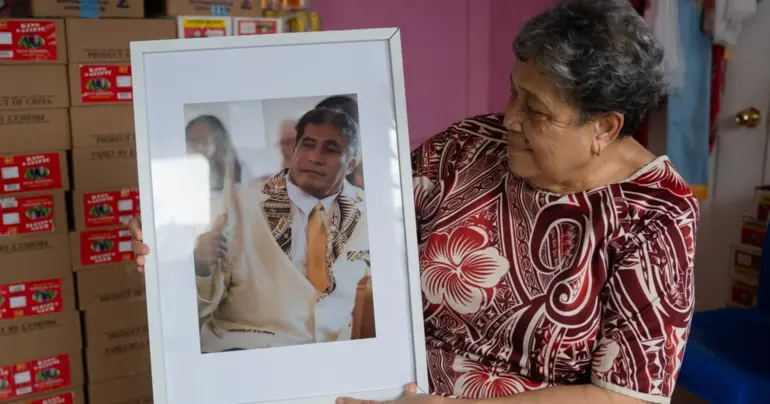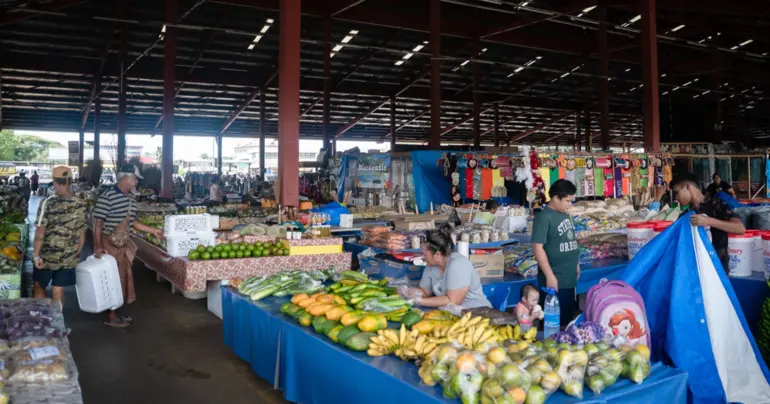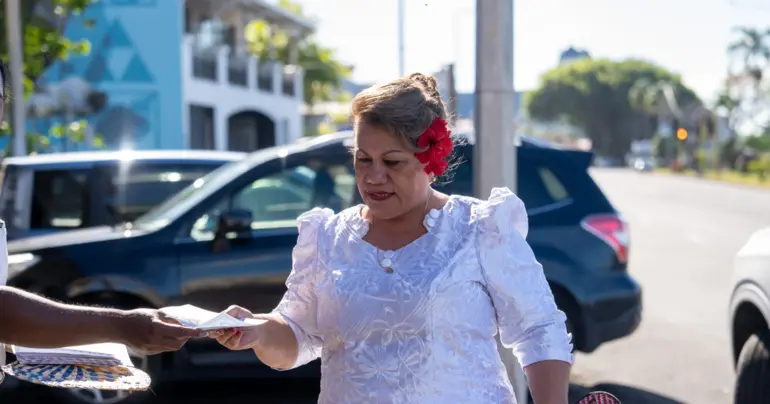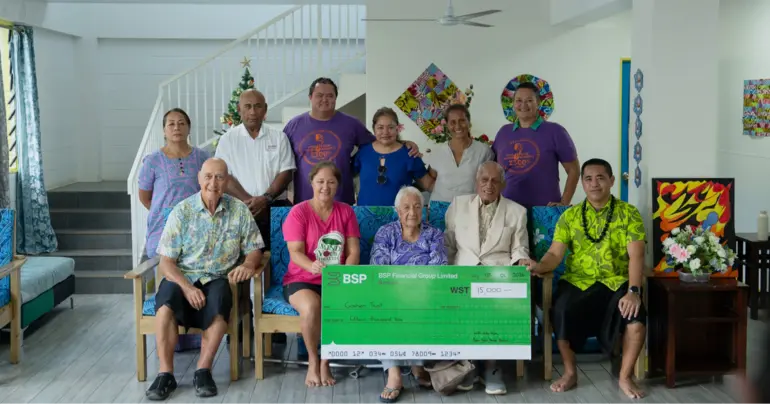Spotify coming to Samoa
 By Sapeer Mayron
•
24 February 2021, 1:00PM
By Sapeer Mayron
•
24 February 2021, 1:00PM
Spotify is finally being released in Samoa, as the global music streaming service rolls out across thee Pacific in coming days.
The streaming giant announced this week it will expand to 85 countries and launch 36 more languages, with the full catalogue available across the board.
Samoa will be getting free and premium plans, and may be eligible for family or student plan options but this has not been confirmed.
Users will get the platform’s famous personalised home screen and programming, including podcasts. Both mobile and desktop versions will be available and in the coming months Spotify plans to connect to other devices like smart televisions, watches and cars.
In a statement, Spotify said the expansion will meet over a billion people, or “potentially Spotify listeners who have yet to tap into the power of our platform.”
As well as offering its services more widely, it plans to grow its musical offerings thanks to the music cultures in the new markets.
“All this untapped music energy and access to our innovative creator tools will help propel artists to new heights and empower them to turn their passion into a profession.”
SkyEye manager Fa’aso’otauloa Sam Saili said this could be the beginning of a trend for other global media companies currently blocking their services from the Pacific.
“I am hoping it will be a trend, that people that have the content [realise] if they keep it to a certain region people from the other regions will find a way to get to it and not pay them
“It’s better that they have access to it and they can legitimately pay for it.”
Spotify, launched in 2006, has never been available to Samoan consumers. In some cases, accounts made overseas continue working when their user gets to Samoa.
Fa’aso’otauloa said a combination of commercial motivations and piracy fears mean some companies lock regions off from their product.
Disney+, HBO Max, Roku, YouTube Premium, several cash transfer apps like Ripple and even some components of the Google Store and iTunes apps are not available in Samoa.
And on available streaming services like Netflix, some content is limited to certain audiences, with Samoa not getting some of the popular content released in the United States.
“Some of the people that own the content only license their content to particular regions, they don’t want to make it available to certain regions that they see as a risk of piracy.
“Or they want to have a particular agreement with whoever will be the player in that region to make sure their content is safe.”
Not only that, but some regions might just not be able to afford certain content, he added.
But as Netflix found, a larger audience is better than a smaller, higher value audience.
“I think they are seeing that commercialising, or selling it as premium is holding back their expansion and that is what Netflix did.
“They just want their content available to as many people as possible […] I think that’s the trend now.”
When it comes to opportunities, Fa’aso’otauloa said if local users are able to upload content to Spotify, it will mean a huge potential audience for local artists and producers.
“That’s one of the biggest benefits I can see […] I can only see that as a positive so that there is more diverse media content available internationally, so people can access Samoan podcasts or music.
“It’s an avenue for revenue but also for us to share our culture with the global audience.”
Base FM and Island Base FM Managing Director Jasmin Ziedan said local artists should be wary before uploading their content to Spotify.
At less than a third of a cent per song stream, artists stand to earn just a few dollars for every 1000 songs of theirs that get played on the platform.
“It’s pretty much nothing,” Ms. Ziedan said. “They pay the least out of all the streaming platforms like Apple Music, Youtube, all of those, by far.
“For an artist in Samoa it’s unlikely they will be played a 1000 times.”
When Spotify was first launched, Ms. Ziedan went along to a conference where Spotify explained what their new platform was all about.
“It was my first introduction to Spotify and it was quite a bad introduction. It wasn’t something artists would be benefiting from, it was a way for a big entity to make a lot of money while the artists get hardly anything.
“It takes away the income musicians usually make by selling their music.”
Ms. Ziedan said Spotify has its uses, and can be a great way to get exposure or advertise new music. But it should not be treated as a money-making tool, she said.
And because it doesn’t expect exclusivity from its users, artists can share their music on dozens of streaming platforms, and drive up their fan-base and possible income that way.
“This is my personal opinion, and my professional opinion: you put your lead single on Spotify so that people get to know you but then you put your whole album on other platforms where you actually get paid.
“Or you sell from the boot of your car like Poetik and other Samoan artists do and get the full amount. So that’s $10 per CD instead of $3 from 1000 plays.”
Ms. Ziedan said artists also need to consider whether Spotify’s algorithm will work in their favour or not.
In late 2020, the company revealed a new feature, offering lower royalty payments in exchange for a boost into users playing feeds.
Writer Adam Aziz reported that for some, this pay-for-play model borders on the illegal act of ‘playola’ where artists would pay radio stations for more airtime.
The model will make it even harder for artists to make money, he found, especially those in the hip hop and rap genres.
“It’s good for big artists who are under big labels, your Top 40, because that is what Spotify will push to you, but for smaller artists it’s not like Spotify will suggest them to you,” Ms. Ziedan said.
“For Samoan artists, yes they can be played in the world but they are competing with more people in the world as well, and the chances that they actually make money off it is quite small.
“They get a promotional platform, I think that’s big value, but that needs to be well educated to artists, how they should use it.”
She said among artists in New Zealand too, not everyone understands the pros and cons of each platform, and especially Spotify.
In Samoa, artists are already at a disadvantage when it comes to royalties. Very few musicians are registered with Australasian Performing Rights Association (A.P.R.A.), which covers Samoa. And according to Ms. Ziedan, very few radio stations are willing to pay royalties to musicians they play on their stations.
“And if you have Spotify on in a bar, say the R.S.A., they have 1000 people there and Spotify pays $0.0003 to play a song to 1000 people, and they didn’t even have to buy it.
“That’s not supposed to happen but especially in places like Samoa where no one controls it, it will happen and it’s not to the benefit of the artist.”
The best platform for artists is Bandcamp, Ms. Ziedan said. With its variety of payment schemes, including a pay-what-you-like option, artists can stand to earn fair money for their music.
In the modern streaming environment, musicians need to perform more and sell merchandise to make up the revenue they once made in CD sales. But between Samoa’s small local marketplace and the pandemic, touring opportunities are limited, she said.
“For Samoans, it’s not like they’ll be touring in Samoa, or coming to America or anything to tour their album.”
 By Sapeer Mayron
•
24 February 2021, 1:00PM
By Sapeer Mayron
•
24 February 2021, 1:00PM











